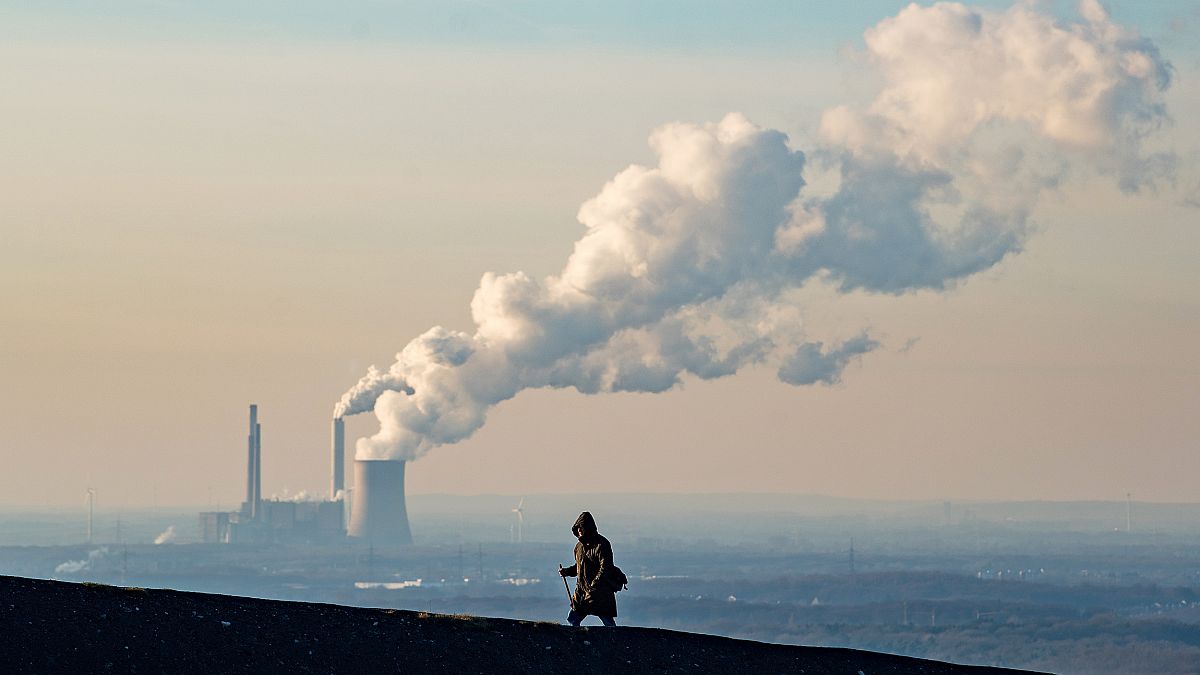Climate scientist Rachel Licker is optimistic that transformative changes can prevent a dangerous rise in sea levels and the loss of our coral reefs.
It'll be even harder than we thought.
Three years after representatives of almost 200 nations met in Paris to agree on a set of goals to curb global warming, a U.N. climate advisory group has issued a stark new report indicating that meeting those goals may be much more difficult than previously recognized.
The report, issued on Monday by the Intergovernmental Panel on Climate Change (IPCC), shows that "we are nowhere near on track to meet the goals of the Paris Agreement," said Rachel Licker, a senior climate scientist with the Union of Concerned Scientists, a Cambridge, Massachusetts-based science advocacy nonprofit. "Current commitments have us on track to reach a level of global warming that is closer to 3 degrees Celsius (C) — far above the 1.5 C and 2 C targets of the Paris agreement."
A couple of degrees might not sound like much. But Licker said it could bring devastating changes in the global environment, including large increases in sea levels and the loss of the world's coral reefs.
Why is it so hard to stop climate change? Can we turn the tide? What is required of governmental leaders — and how can citizens help? Licker answered these and other questions in a wide-ranging interview with NBC News MACH. The interview, conducted via internet chat and email, has been edited for clarity and brevity.
NBC News MACH:We've known for years that climate change poses major threats to the planet. Why the new report — and why now?
Licker: The report was requested by members of the U.N. Framework Convention on Climate Change, including the U.S., during the adoption of the Paris Agreement. Member countries recognized that the commitments countries were putting forth at that point were not enough to meet the Paris Agreement goals, so they asked the IPCC to provide them with technical information that could inform their deliberations. The report will serve as key technical input for a discussion at the next U.N. climate change conference in Poland later this year.
And the report makes it clear that we must do more to limit the rise in global temperatures?
That's correct. The report brings greater clarity to the actions necessary to limit global warming to 1.5 or 2 degrees Celsius (2.7 degrees or 3.6 degrees Fahrenheit). It shows society will need to achieve net-zero emissions of carbon dioxide by 2050, and achieve net reductions of other global warming gases by 2030.
One IPCC scientist said the effects of climate change could be irreversible. You've mentioned sea level rise and the loss of coral reefs as possibilities. Can you explain just what's at stake here?
Coral reefs are critical for a variety of reasons. They are home to huge concentrations of marine biodiversity and, as such, are important sources of food as well as tourism revenue. They also provide important services to coastal communities. For example, they help break up storm waters before they make landfall.
Earth's sea level has already risen by about seven or eight inches since 1900. The new report shows that in a 2 C world, sea level rise is projected to be about four inches higher than it would be in a 1.5 C world. That's enough to expose an additional 10 million people around the world to risks from sea level rise.
science
The report also says the Arctic Ocean could become free of sea ice in the summer — once a century in a 1.5 C world and at least once a decade in a 2 C world. What difference would that make?
If the Arctic Ocean were to have just one summer where the sea ice completely disappeared, this would be catastrophic for species whose life cycle is dependent on Arctic sea ice.
What about severe weather?
The report shows that in midlatitude countries like the U.S., our hottest days are expected to be significantly higher in a 2 C world than in a 1.5 C world — and will only increase from there with more global warming. Eastern North American is among the regions likely to see higher risks from heavy precipitation events — and again, those risks will only be higher with higher levels of global warming. The U.S is also likely to experience other serious impacts, including more intense hurricanes and large wildfires.
What would those changes mean for our health and safety?
Even today, extreme weather events have serious consequences for the health and safety of people in the U.S. and around the world. We only need to look to this year to see how extreme heat waves helped create the conditions for large wildfires in the West, which led to the loss of life and homes. Hurricane Florence led to numerous deaths and damaged infrastructure. And last year's wildfire season and hurricanes tell a similar story. More global warming means more of these kinds of events.
Another IPCC scientist said limiting the temperature rise to 1.5 C was "possible within the laws of chemistry and physics but doing so would require unprecedented changes." What sorts of changes are needed?
Limiting warming to 1.5 or 2 C will require many transformative changes, from the composition of our energy infrastructure to the way we travel to the way we grow and consume food. It will also require using what we know as carbon dioxide removal measures — things like reforesting areas and restoring land so they can take up carbon dioxide from the atmosphere. While it won't be easy, we have many of the necessary technologies in hand now.
The report makes it clear that to cut carbon dioxide emissions we need large-scale transformations in the way we generate and use electricity, shifting away from fossil fuel-based sources and ramping up renewable energy and energy efficiency. The pathways to limiting warming to 1.5 degrees Celsius that were examined in this report also generally include an increase in the share of nuclear energy production and carbon capture and storage.
How realistic is it to think that we'll be able to take the necessary steps?
Countries, states and cities are already making significant strides to step up on reducing global warming emissions. These actions are getting us closer to the Paris Agreement's goals, but we need each and every nation to follow suit.
What about the U.S.?
As one of the biggest emitters of global warming emissions, the U.S. has a big role to play in limiting warming to 1.5 C. The Trump administration's move to pull the U.S. out of the Paris Agreement, as well as its moves to roll back other key domestic policies that would reduce our global warming emissions, will only make things harder. Many states, communities, the private sector and other such actors are stepping in to try to fill the gap, but as this report shows now is not the time for scaling back ambition. We need all hands on deck.
Are there things citizens can do to help?
Absolutely. In our daily life, we can take many measures to reduce our global warming emissions. We can reduce our home energy consumption by using more efficient appliances and reduce the amount that we travel by car, using other means of transportation when possible. We can also call upon our elected officials to enact policies that will make it easier and less expensive in the long run for us to reduce our energy use, rely on clean energy sources, and produce fewer global warming emissions.
What about giving up meat?
Meat consumption is a significant source of global warming emissions. Eating less meat is, in general, a way that people can reduce their carbon footprint.
If we're not even on track to limit the temperature rise to 2 C above pre-industrial levels, what hope do we have to keep it below 1.5 C? Isn't the new report ultimately more reason for pessimism about the climate?
Limiting global warming to 1.5 C will certainly not be easy. It will require major societal transformations. At the end of the day, though, whether we enact measures to achieve this is our choice.

